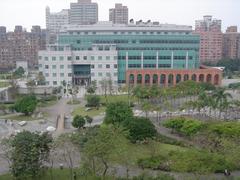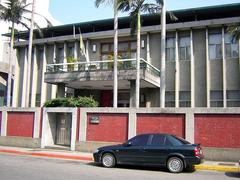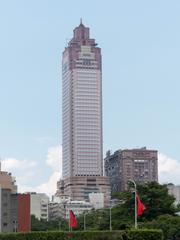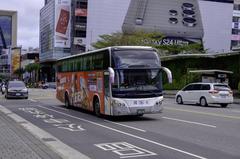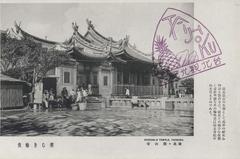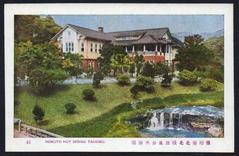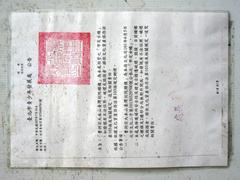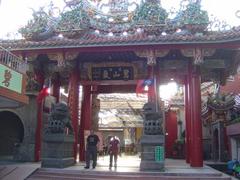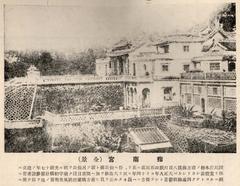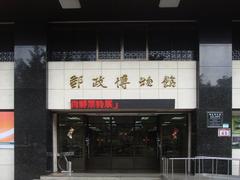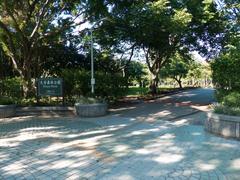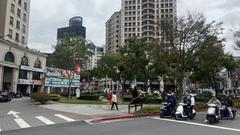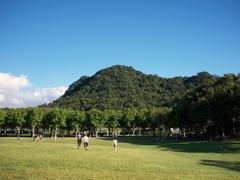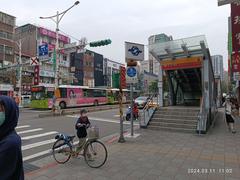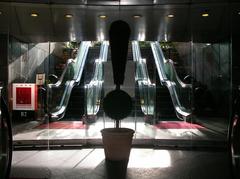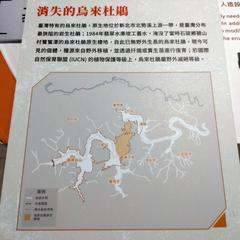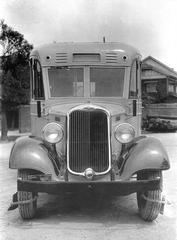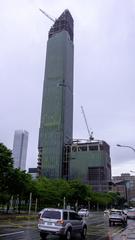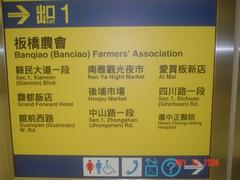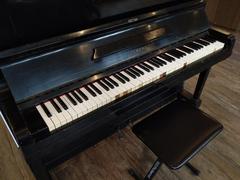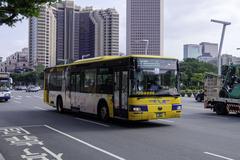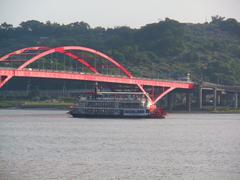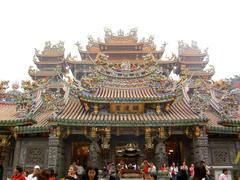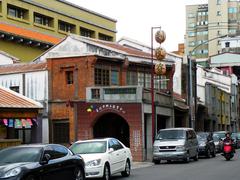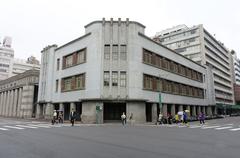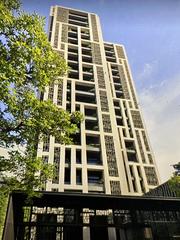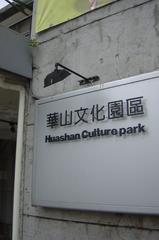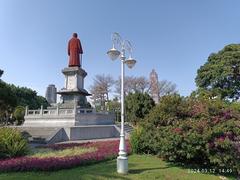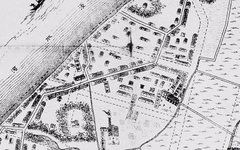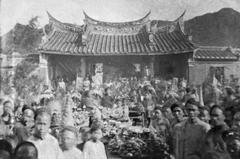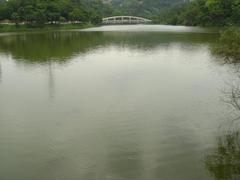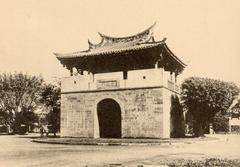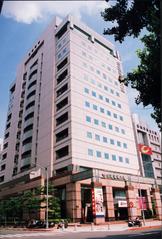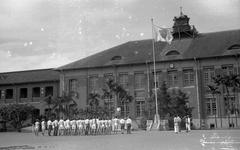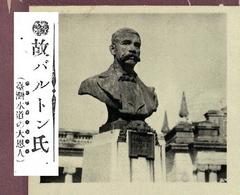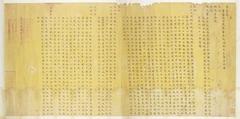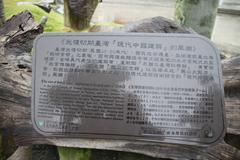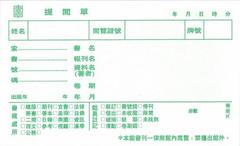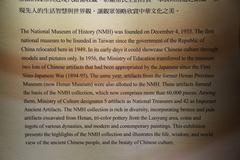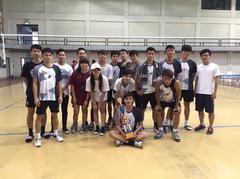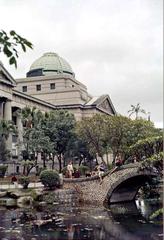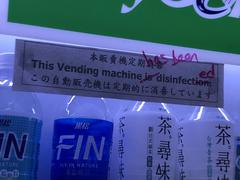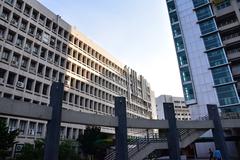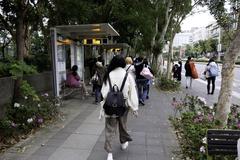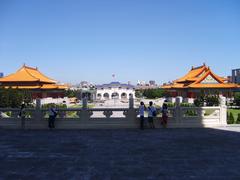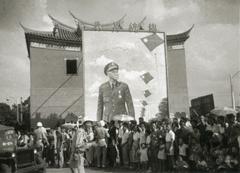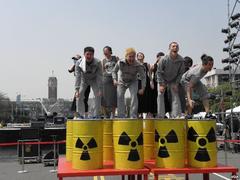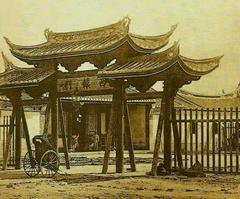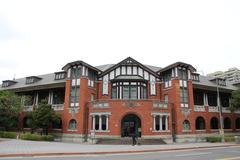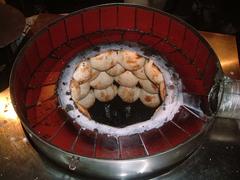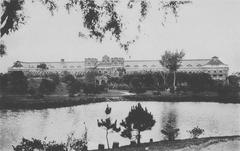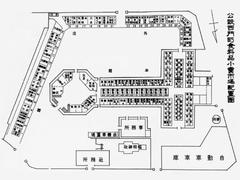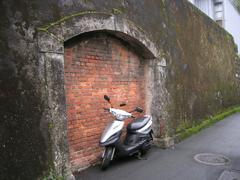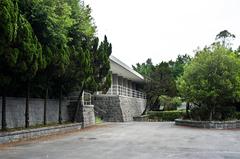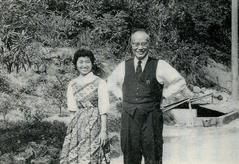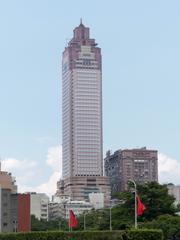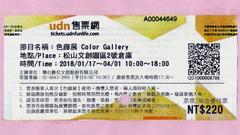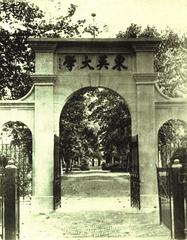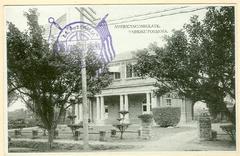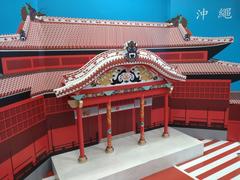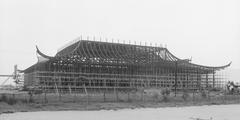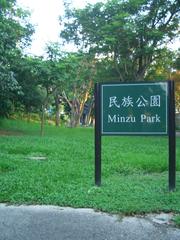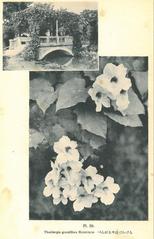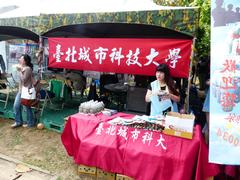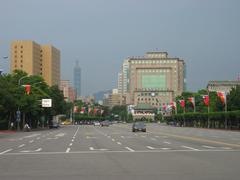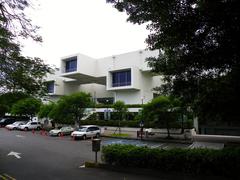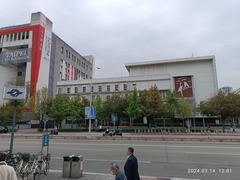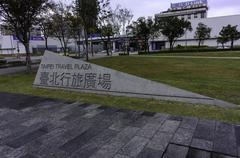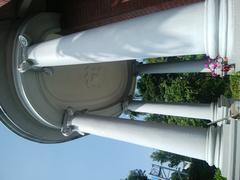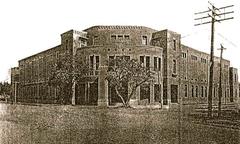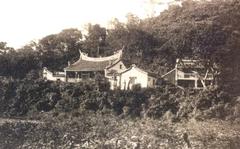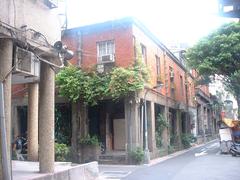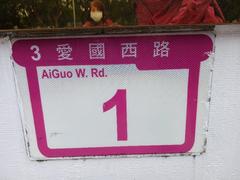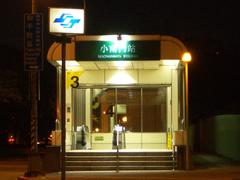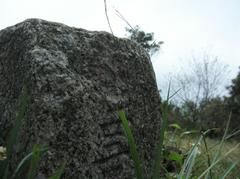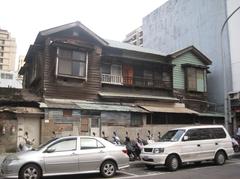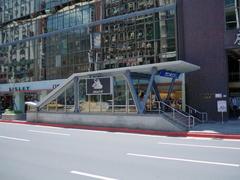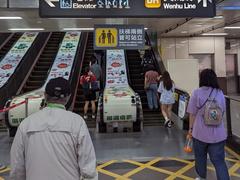Comprehensive Guide to Visiting 李國鼎故居, Taipei, Taiwan
Date: 19/07/2024
Introduction
Nestled in the heart of Taipei, 李國鼎故居 (Li Kuo-Ting’s Former Residence) stands as a monument to the remarkable legacy of Li Kuo-Ting, a pioneering figure in Taiwan’s economic history. Often hailed as the ‘Father of Taiwan’s Economic Miracle,’ Li Kuo-Ting’s contributions were instrumental in transforming Taiwan from an agrarian society into a high-tech industrial powerhouse. Born in 1910 in Jiangsu Province, China, and later relocating to Taiwan in 1949, Li Kuo-Ting’s career spanned various critical roles, including the Minister of Economic Affairs and the Chairman of the Council for Economic Planning and Development (Taipei City Government). His efforts culminated in the establishment of the Hsinchu Science Park in 1980, which has since become a global hub for high-tech industries and innovation (National Palace Museum).
Today, Li Kuo-Ting’s former residence serves not only as a historical landmark but also as an educational and cultural center. The residence, a traditional Taiwanese house, reflects the architectural style and cultural heritage of the time. It has been meticulously preserved by the Taipei City Government and various cultural organizations to ensure that future generations can learn about and appreciate Li Kuo-Ting’s monumental contributions. Visitors can explore interactive exhibits, historical documents, and multimedia presentations that provide a comprehensive understanding of his life and achievements (Din Tai Fung).
Table of Contents
- [History of 李國鼎故居 (Li Kuo-Ting’s Former Residence)](#history-of-李國鼎故居-li-kuo-tings-former-residencehistory-of-李國鼎故居-li-kuo-tings-former-residence)
- [Early Life and Career of Li Kuo-Ting](#early-life-and-career-of-li-kuo-tingearly-life-and-career-of-li-kuo-ting)
- [Migration to Taiwan and Political Career](#migration-to-taiwan-and-political-careermigration-to-taiwan-and-political-career)
- [Contributions to Taiwan’s Economic Development](#contributions-to-taiwans-economic-developmentcontributions-to-taiwans-economic-development)
- [The Residence - A Historical Landmark](#the-residence---a-historical-landmarkthe-residence---a-historical-landmark)
- [Architectural Significance](#architectural-significancearchitectural-significance)
- [Preservation and Restoration Efforts](#preservation-and-restoration-effortspreservation-and-restoration-efforts)
- [Educational and Cultural Significance](#educational-and-cultural-significanceeducational-and-cultural-significance)
- [Visitor Experience](#visitor-experiencevisitor-experience)
- [Accessibility and Visitor Information](#accessibility-and-visitor-informationaccessibility-and-visitor-information)
- [Frequently Asked Questions (FAQ)](#frequently-asked-questions-faqfrequently-asked-questions-faq)
- [Nearby Attractions and Travel Tips](#nearby-attractions-and-travel-tipsnearby-attractions-and-travel-tips)
- [Dining Options](#dining-optionsdining-options)
- [Souvenirs and Shopping](#souvenirs-and-shoppingsouvenirs-and-shopping)
- [Conclusion](#conclusionconclusion)
- [References](#referencesreferences)
History of 李國鼎故居 (Li Kuo-Ting’s Former Residence)
Early Life and Career of Li Kuo-Ting
李國鼎 (Li Kuo-Ting), born in 1910 in Jiangsu Province, China, was a prominent figure in Taiwan’s economic development. He graduated from the prestigious Tsinghua University and later pursued further studies in the United States, earning a degree in electrical engineering from the University of Michigan. His early career was marked by significant contributions to engineering and technology, laying the groundwork for his later achievements in economic planning and policy-making.
Migration to Taiwan and Political Career
Following the Chinese Civil War, Li Kuo-Ting moved to Taiwan in 1949 along with the Nationalist government. In Taiwan, he initially worked in various technical and administrative roles before transitioning to a more prominent position in the government. His expertise in engineering and technology made him an invaluable asset to Taiwan’s economic planning efforts.
Contributions to Taiwan’s Economic Development
Li Kuo-Ting is often referred to as the “Father of Taiwan’s Economic Miracle” due to his pivotal role in transforming Taiwan’s economy from an agrarian society to a highly industrialized and technologically advanced nation. As the Minister of Economic Affairs and later as the Chairman of the Council for Economic Planning and Development, Li implemented a series of economic policies that spurred rapid industrialization and export growth.
One of his most notable achievements was the establishment of the Hsinchu Science Park in 1980, which became a hub for high-tech industries and innovation. This initiative attracted numerous international companies and fostered the growth of Taiwan’s semiconductor industry, making it a global leader in technology and manufacturing.
The Residence - A Historical Landmark
Architectural Significance
The architecture of Li Kuo-Ting’s former residence is a blend of traditional Taiwanese and modern influences. The house features a courtyard layout, typical of traditional Taiwanese homes, providing a serene and tranquil environment. The interior of the house is adorned with period furniture and artifacts, offering insights into the lifestyle and personal tastes of Li Kuo-Ting.
Preservation and Restoration Efforts
In recent years, significant efforts have been made to preserve and restore Li Kuo-Ting’s former residence. The Taipei City Government, in collaboration with various cultural and historical organizations, has undertaken extensive restoration projects to ensure that the residence remains a well-preserved historical site. These efforts include structural repairs, restoration of original furnishings, and the installation of informative displays and exhibits.
Educational and Cultural Significance
Li Kuo-Ting’s former residence serves not only as a historical landmark but also as an educational and cultural center. The residence hosts various exhibitions and events that highlight Li Kuo-Ting’s contributions to Taiwan’s economic development and his impact on the nation’s history. Visitors can explore interactive displays, historical documents, and multimedia presentations that provide a comprehensive understanding of Li Kuo-Ting’s life and achievements.
Visitor Experience
Accessibility and Visitor Information
Li Kuo-Ting’s former residence is conveniently located in Taipei, making it easily accessible to both local and international visitors. The residence is open daily from 9:00 AM to 5:00 PM, and admission is free. Visitors are encouraged to check the official website for the latest information on opening hours, special exhibitions, and events. (Taipei City Government)
Frequently Asked Questions (FAQ)
Q: What are the visiting hours of Li Kuo-Ting’s Former Residence?
A: The residence is open daily from 9:00 AM to 5:00 PM.
Q: How much are the tickets?
A: Admission to the residence is free.
Q: What are the nearby attractions?
A: Nearby attractions include the National Palace Museum, Taipei 101, and the Shilin Night Market.
Q: How do I get to Li Kuo-Ting’s Former Residence?
A: The residence is easily accessible via public transportation. Visitors can take the MRT to the Shilin Station and then a short bus or taxi ride to the site.
Nearby Attractions and Travel Tips
Dining Options
While there are no dining facilities within 李國鼎故居 itself, the surrounding area offers a variety of dining options. From traditional Taiwanese cuisine to international fare, visitors can find numerous restaurants and cafes to suit their tastes. Some popular nearby eateries include:
- Din Tai Fung - Famous for its xiaolongbao (soup dumplings), this restaurant is a must-visit for food enthusiasts. (Din Tai Fung)
- Shilin Night Market - Offers a plethora of street food options, from stinky tofu to bubble tea. (Shilin Night Market)
Souvenirs and Shopping
For those looking to take home a piece of their visit, the gift shop at 李國鼎故居 offers a range of souvenirs, including books, postcards, and memorabilia related to Li Kuo-Ting and Taiwanese history. Additionally, the nearby Shilin Night Market and various local shops provide ample opportunities for unique and traditional Taiwanese gifts.
Conclusion
李國鼎故居 (Li Kuo-Ting’s Former Residence) offers a unique and enriching experience for visitors, providing deep insights into the life and legacy of one of Taiwan’s most influential figures. As a meticulously preserved historical site, it stands as a testament to Li Kuo-Ting’s visionary leadership and his pivotal role in Taiwan’s economic transformation. The residence not only celebrates his contributions but also serves as an educational resource, inspiring future generations through its exhibits and interactive displays.
For those planning to visit, the residence is conveniently located in Taipei and is easily accessible via public transportation. Admission is free, making it an accessible destination for both local and international visitors. Nearby attractions such as the National Palace Museum, Shilin Night Market, and Yangmingshan National Park offer additional cultural and recreational opportunities, allowing for a well-rounded and memorable visit (Shilin Night Market).
By preserving and showcasing Li Kuo-Ting’s former residence, Taipei not only honors a key figure in its history but also provides a valuable educational and cultural resource. This landmark continues to inspire and educate, ensuring that Li Kuo-Ting’s legacy endures for generations to come. For more information and updates, visitors are encouraged to follow the official channels and social media platforms (Taipei City Government).
References
- Taipei City Government. (n.d.). Retrieved from Taipei City Government
- National Palace Museum. (n.d.). Retrieved from National Palace Museum
- Din Tai Fung. (n.d.). Retrieved from Din Tai Fung
- Shilin Night Market. (n.d.). Retrieved from Shilin Night Market
